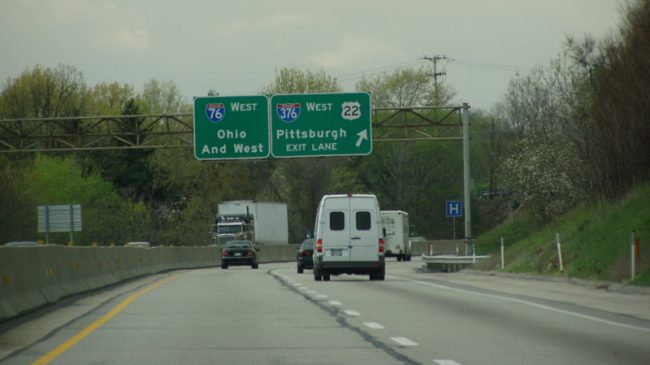In July, the Pennsylvania Turnpike Commission (PTC) sent out a request for qualifications (RFQ) to recruit private partners for its Fiber Optic Broadband Network Project through a public-private partnership (PPP). The development entity will be responsible for designing, constructing, financing, operating and maintaining a fiber optic cable along the state’s 550-mile turnpike for 30 years after its completion.
A primary purpose of the broadband network will be to expand the PTC’s cashless toll collections. It will also provide connectivity for the PTC’s administrative buildings, maintenance sheds, tolling systems, traffic cameras, electronic road signs, in addition to accommodating future applications.
Currently, the turnpike uses a microwave system that relies on a series of relay towers for all its internal communications, including telephone service, radio exchange between offices and maintenance staff, financial information from toll collections, traffic cameras, digital road signs, and the entire turnpike computer network.
The private partner will have the opportunity to lease remaining capacity on the system to other companies that have communications needs, while splitting a share of the profits with the commission.
While the principal objective is to facilitate the PTC’s current and future data communication needs, the RFQ outlines other specific objectives:
- Provide cost effective communications and create potential revenue by commercializing a fraction of the broadband infrastructure;
- Cutting or removing upkeep of tower and communications infrastructure expenses;
- Delivering a dependable network that has adequate capacity for present and future needs;
- Expanding the project’s construction without impeding the Commission’s current operations;
- Acting as a conduit for the extension of inexpensive broadband services to rural areas and other underserved people;
- Delivering economic expansion through the extension of broadband service; and
- Constructing network capacity for interconnected automated driving systems technology to improve safety and mobility of freight and passenger automobiles
Currently, cost estimates are priced around $200 million to finance the project, and the list of possible private firms competing for the contract has been shortlisted down to a few firms. A request for proposals is planned for November, according to a spokesman for the PTC, with the goal of beginning construction in 2018.
This project is not only of benefit to the Turnpike and its private partner, but also travelers, commuters, and local businesses. The broadband infrastructure will provide more advanced, accurate traffic notifications to drivers of all kinds. Interactions between vehicles to send and receive information to the network will facilitate more precise road conditions. And local businesses will have the opportunity to improve communications with employees and customers, which will stimulate local economies.
Pennsylvania is not alone in thinking big on broadband infrastructure deployment. They have teamed up with Michigan and Ohio to form a broader coalition to be the first of their kind to uniquely upgrade their infrastructure systems in the region. Called the Smart Belt Coalition, their aim is to “to support research, testing, policy, funding pursuits and deployment, as well as share data and provide unique opportunities for private-sector testers,” according to a January 2017 press release.
Without the private industry involvement, projects such as this fiber optic network could not be as innovative or as cost effective to taxpayers as they otherwise would be. PPPs allow legislators to focus on more pressing issues, while allowing the private sector to do what they do best—innovate and provide value for local communities and society at large. The Commonwealth’s recent Turnpike fiber network PPP shows that officials are thinking both short and long–term about how broadband can be utilized to improve traffic flows— from providing updated traffic info to drivers in real time to (eventually) allowing vehicles to become the drivers themselves.
